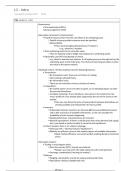Summary
All-in-one Summary, notes and lecture commentary on Derivative Instruments
- Course
- Institution
- Book
This document was carefully drafted to include notes on the course's reading material, commentary on the lecture slides, and includes the summary of each chapter on the bottom panel on each of the subsections. This is a very efficient yet in-depth document for students who want to omptimize their s...
[Show more]




